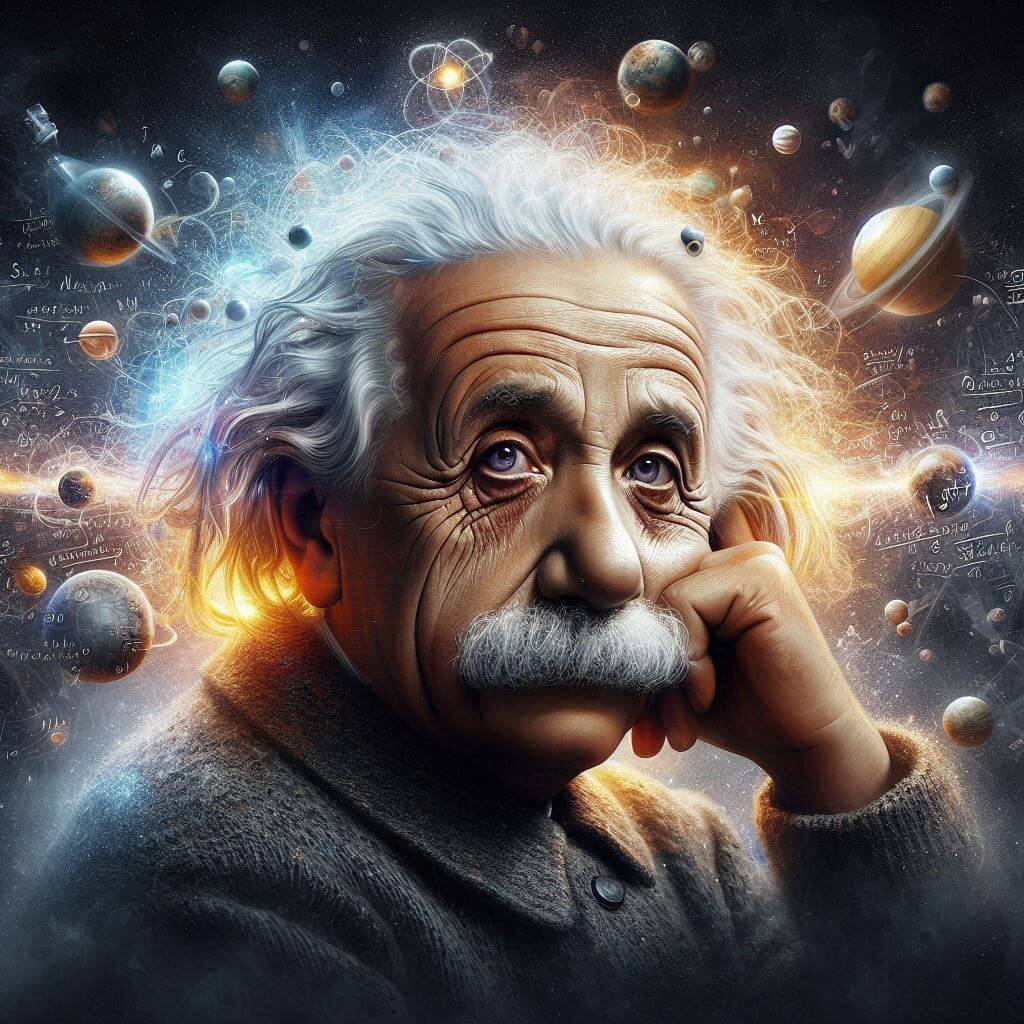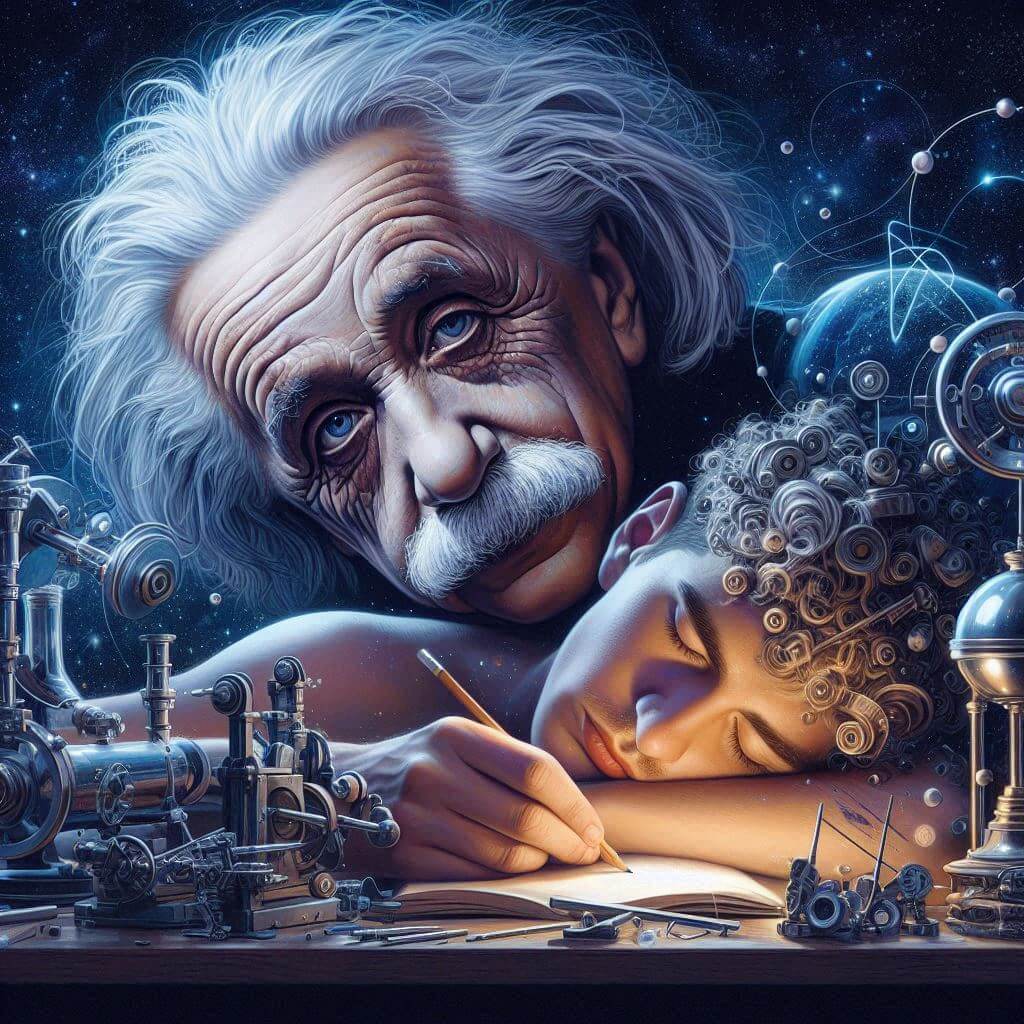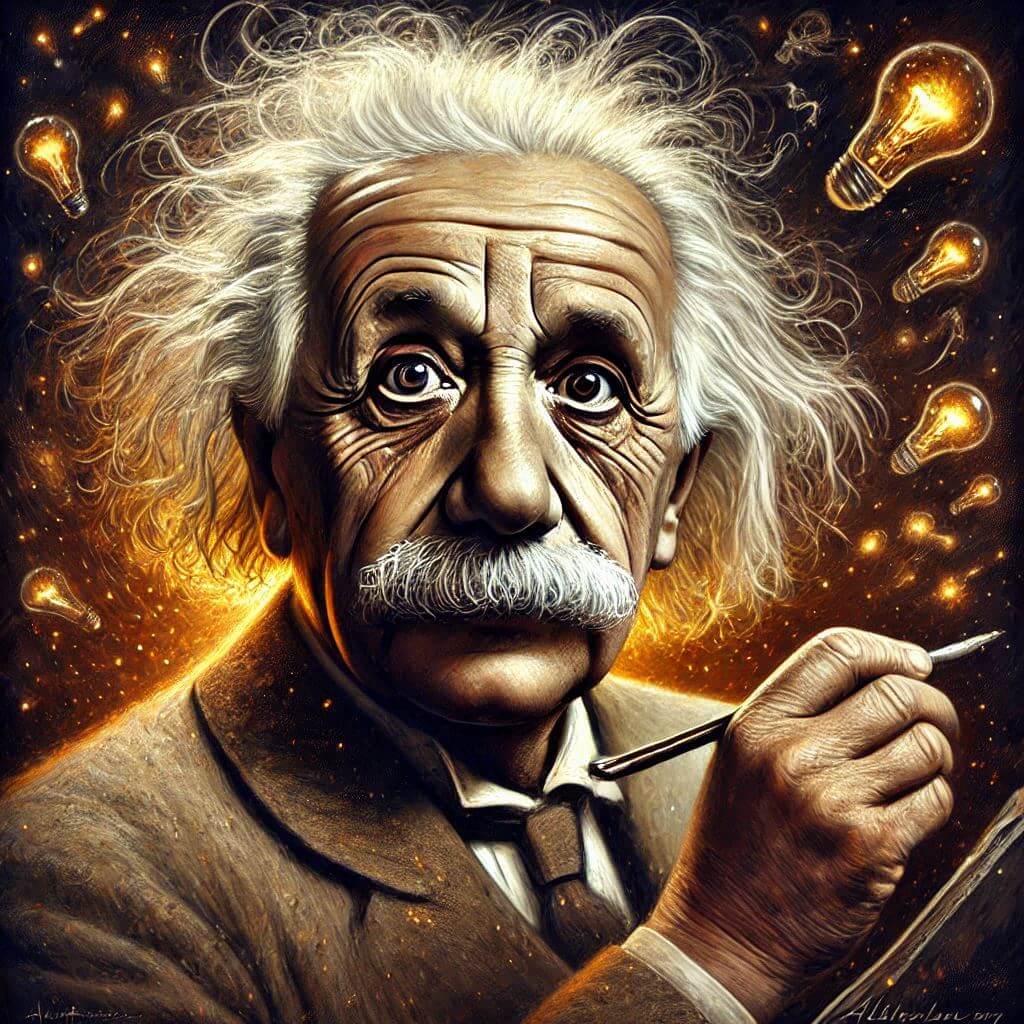Albert Einstein kimdir, ingilizce hayatı, biyografisi, çalışmaları, buluşları nelerdir? Albert Einstein hakkında ingilizce biyografi.
Albert Einstein, one of the most famous scientists in history, is celebrated for his groundbreaking contributions to physics, particularly his theory of relativity. His name is synonymous with genius, and his work continues to influence modern science, technology, and philosophy. This detailed narrative will explore his life, career, scientific discoveries, and legacy, emphasizing key moments and achievements that shaped his career and our understanding of the universe.

Early Life and Education
Albert Einstein was born on March 14, 1879, in Ulm, a small town in the Kingdom of Württemberg in the German Empire. His parents, Hermann Einstein and Pauline Koch, were of Jewish descent. His father was a salesman and engineer, while his mother was a homemaker. At a young age, Einstein exhibited an early fascination with science, particularly mathematics and physics, though his early education was not always smooth.
As a child, Einstein struggled with the rigid schooling system. He was often described as rebellious and non-conformist, but he excelled in subjects he enjoyed, especially mathematics. Einstein’s curiosity about the world around him grew as he devoured books on geometry and physics, and by the age of 12, he was teaching himself Euclidean geometry. His academic difficulties were due more to his disinterest in rote learning than a lack of intellectual ability. In fact, some of his teachers believed he lacked focus and ambition.
Einstein attended the Swiss Federal Polytechnic in Zurich (ETH Zurich) from 1896 to 1900, where he trained to become a teacher of physics and mathematics. During his time at the Polytechnic, Einstein was known for his unorthodox approach to learning, often challenging the prevailing academic conventions of the time. After completing his studies, Einstein struggled to find a teaching job. In 1902, he secured a position as a technical assistant at the Swiss Patent Office in Bern, which provided him with financial stability and the freedom to continue his scientific pursuits in his spare time.
Scientific Career and Major Discoveries
The Special Theory of Relativity
In 1905, a year often referred to as Einstein’s “Annus Mirabilis” (miracle year), he published four groundbreaking papers in the Annalen der Physik (Annals of Physics). These papers would change the trajectory of modern physics and forever alter our understanding of space, time, and the nature of reality. Among these was the first paper on the Special Theory of Relativity, which introduced the famous equation E = mc², establishing the equivalence of mass and energy.
Before Einstein, Newtonian mechanics governed the understanding of space and time. However, Einstein’s theory showed that space and time were not absolute but relative to the observer’s motion. This radical idea overturned centuries of scientific thought. The theory postulated that the laws of physics are the same for all observers in uniform motion, and that the speed of light in a vacuum is constant for all observers, regardless of their relative motion. This was a revolutionary concept at the time.
The special theory of relativity had profound implications, particularly in the fields of space travel and energy. It showed that small amounts of matter could be converted into enormous amounts of energy, a concept that would later play a central role in the development of nuclear energy and weapons. Einstein’s equation, E = mc², provided the theoretical basis for understanding nuclear fission and fusion.
The Photoelectric Effect and Quantum Mechanics
Another of Einstein’s pivotal contributions to physics in 1905 was his work on the photoelectric effect, for which he was awarded the Nobel Prize in Physics in 1921. In this paper, Einstein demonstrated that light can be understood as both a wave and a particle, a duality that became foundational in the development of quantum mechanics.
The photoelectric effect refers to the phenomenon where light shining on a metal surface causes the emission of electrons. Traditional wave theory could not fully explain why only light of certain frequencies would cause the emission of electrons, regardless of the light’s intensity. Einstein proposed that light is composed of discrete packets of energy called photons. When a photon with enough energy strikes an electron, it can free the electron from the metal. This explanation was a key development in the quantum theory of light, which had far-reaching implications for the understanding of atomic and subatomic processes.
While Einstein’s work on the photoelectric effect was crucial for the development of quantum theory, he was not fully comfortable with the theory’s probabilistic nature. He famously said, “God does not play dice with the universe,” expressing his discomfort with the randomness inherent in quantum mechanics. Despite his reservations, Einstein’s work helped lay the foundation for the quantum revolution that would follow.

The General Theory of Relativity
Einstein’s next major breakthrough came in 1915, when he published the General Theory of Relativity, a more comprehensive theory of gravity. Building on his earlier work in special relativity, the general theory posited that gravity is not a force between masses, as Newton had described, but rather a curvature of spacetime caused by mass and energy.
The idea that massive objects like the Earth and the Sun warp the fabric of spacetime was difficult to conceptualize but has been experimentally confirmed time and time again. One of the key predictions of the theory was that light would bend when passing near a massive object, such as the Sun. This prediction was famously confirmed during a solar eclipse in 1919, when British astronomers Arthur Eddington and Frank Dyson observed the bending of light from distant stars around the Sun. The results were widely publicized and catapulted Einstein to international fame.
The general theory of relativity revolutionized our understanding of gravity, and its predictions have been confirmed by numerous experiments, including the discovery of gravitational waves in 2015. These waves, ripples in spacetime caused by the acceleration of massive objects, were directly detected by the LIGO (Laser Interferometer Gravitational-Wave Observatory) collaboration, providing another confirmation of Einstein’s theory.
The Unified Field Theory
Later in his career, Einstein sought to extend his work by developing a unified field theory, an attempt to reconcile the forces of gravity and electromagnetism into a single framework. This effort was inspired by his belief that the universe’s fundamental laws were interconnected. However, despite his best efforts, Einstein was unable to fully formulate a successful unified field theory. In the years following his death, physicists would later develop quantum field theory and the Standard Model, which describe the electromagnetic, weak, and strong nuclear forces, though a complete theory of quantum gravity remains an unsolved problem.

Personal Life and Philosophy
Family Life
Albert Einstein married twice in his life. His first marriage was to Mileva Marić, a fellow student at the Polytechnic, in 1903. They had two sons, Hans Albert and Eduard, but their relationship was strained, and they divorced in 1919. Shortly after his divorce, Einstein married Elsa Löwenthal, his cousin, who had been a supportive figure during his early years of fame. Elsa played a significant role in managing Einstein’s personal life, especially after he became an international celebrity.
Einstein was known to be a somewhat absent father, as he was deeply absorbed in his scientific work. However, his relationships with his sons were important to him, and he remained close with Hans Albert, though his relationship with Eduard, who struggled with mental illness, was more distant.
Political and Social Views
Einstein was not only a physicist but also a philosopher and humanitarian. He was a committed pacifist, particularly after the horrors of World War I, although he later softened his stance during World War II due to the threat of Nazi Germany. Einstein was also a staunch advocate for civil rights, particularly in the United States, where he emigrated in 1933 after Adolf Hitler came to power. He was a member of the American Civil Liberties Union (ACLU) and publicly supported African American civil rights leaders, including W.E.B. Du Bois and Paul Robeson.
Although Einstein’s scientific work had made him a figure of international importance, his political beliefs often brought him into conflict with those in power. His outspoken criticisms of nationalism, militarism, and racism led to tensions with political leaders, but he remained an advocate for peace and human rights throughout his life.
Later Years and Legacy
In 1933, with the rise of Nazism in Germany, Einstein fled the country, eventually settling in the United States. He accepted a position at Princeton University in New Jersey, where he remained for the rest of his career. Though he officially retired from his role at Princeton in 1945, he continued his scientific work, primarily focusing on his theories of gravitation and the pursuit of a unified field theory.
Albert Einstein passed away on April 18, 1955, at the age of 76. His death marked the end of an era in physics, but his work continues to influence nearly every field of science. His theories remain central to the understanding of space, time, and gravity, and his legacy lives on in the technological advancements made possible by his discoveries, including nuclear energy, GPS navigation, and space exploration.
Conclusion
Albert Einstein’s life was one of relentless curiosity, scientific brilliance, and a commitment to humanity. From his humble beginnings in Germany to becoming one of the most iconic figures in science, Einstein’s contributions to our understanding of the universe have reshaped not only physics but also philosophy, technology, and politics. His work continues to inspire new generations of scientists and thinkers who seek to understand the fundamental workings of the universe. Albert Einstein’s impact on the world is immeasurable, and his name remains synonymous with innovation and intellectual excellence


